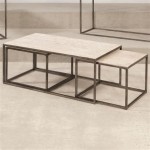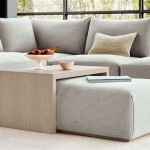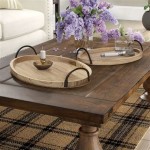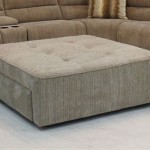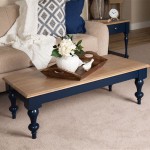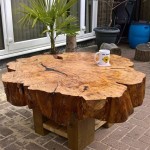Mango Wood Coffee Tables: A Guide To Style And Functionality Of Furniture
Mango wood coffee tables have become increasingly popular in recent years, prized for their unique aesthetic appeal, durability, and sustainable sourcing. This article provides a comprehensive overview of mango wood coffee tables, examining their stylistic versatility, functional benefits, and key considerations when selecting the right piece for a living space. The information presented aims to equip potential buyers with the knowledge needed to make informed decisions about incorporating this versatile furniture item into their homes.
Mango wood is derived from the mango tree (Mangifera indica), a fruit-bearing tree cultivated extensively in tropical and subtropical regions worldwide. Once mango trees cease to bear fruit viably, often after approximately 15-20 years, they are harvested for their wood. This practice offers an environmentally sound alternative to harvesting trees solely for timber production, contributing to sustainable forestry practices. The wood itself boasts a distinctive grain pattern, ranging from straight to interlocked, often exhibiting variations in color from light golden brown to darker shades with occasional pink or green hues. These natural variations enhance the character and individuality of each piece of furniture.
Beyond its environmental benefits, mango wood possesses inherent qualities that make it suitable for furniture construction. It is a hardwood, offering a good balance of strength and workability. While not as dense as some hardwoods like oak or teak, it is sufficiently durable to withstand daily use and resist wear and tear. The grain pattern lends itself well to various finishes, allowing manufacturers to achieve a range of styles, from rustic and distressed to modern and polished.
The versatility of mango wood allows coffee tables to be manufactured in numerous styles. These styles range from intricate carvings to minimalist designs, making it easy to integrate into many home decor themes. The natural variations and coloring make for a unique piece of furniture in every home.
Stylistic Versatility: Adapting to Diverse Decor Themes
One of the most compelling aspects of mango wood coffee tables is their stylistic versatility. This allows them to seamlessly integrate into and complement a wide range of interior design themes. The inherent warmth and natural beauty of the wood provide a neutral foundation that can be adapted to suit various aesthetic preferences.
For those drawn to rustic or farmhouse styles, mango wood coffee tables can be found with distressed finishes, showcasing the natural grain and imperfections of the wood. These tables often feature chunky legs, planked tops, and visible joinery, contributing to a sense of authenticity and handcrafted charm. Darker stains and antiqued hardware further enhance the rustic appeal, creating a cozy and inviting atmosphere.
In contrast, modern and contemporary spaces can benefit from mango wood coffee tables with clean lines, minimalist designs, and sleek finishes. Lighter stains or natural oil finishes accentuate the wood's inherent beauty without overwhelming the space. Tables with metal legs or geometric shapes add a touch of industrial chic, while those with glass tops provide a sense of lightness and openness, allowing the beauty of the wood grain to remain visible.
Bohemian-inspired interiors can embrace mango wood coffee tables with intricate carvings, ethnic patterns, or vibrant colors. These tables often incorporate elements of global design, reflecting a sense of wanderlust and eclecticism. Handcrafted details, such as inlaid tiles, mosaic patterns, or hand-painted motifs, add visual interest and personality to the space. The natural warmth of the mango wood complements the rich colors and textures characteristic of bohemian decor.
For transitional spaces that blend traditional and modern elements, mango wood coffee tables can offer a harmonious balance. Tables with classic silhouettes and refined details, such as turned legs or beveled edges, provide a sense of formality while the natural wood grain maintains a sense of organic warmth. A medium stain or a subtle glaze can enhance the wood's beauty without being overly ornate.
Functional Benefits: Practicality and Convenience
Beyond their aesthetic appeal, mango wood coffee tables offer a range of functional benefits that enhance the practicality and convenience of a living space. These tables serve as a central gathering point, providing a surface for drinks, snacks, books, and other essential items. The size, shape, and design of a coffee table can significantly impact its functionality, influencing how it integrates into the flow of the room.
Storage solutions are often integrated into mango wood coffee tables, providing valuable space for organizing and decluttering. Tables with drawers offer concealed storage for remote controls, magazines, and other small items, keeping the surface clear and uncluttered. Open shelving provides a convenient place to display books, decorative objects, or baskets for storing blankets or pillows. Lift-top coffee tables offer a versatile solution for those who frequently work or eat in front of the television, providing a raised surface that can be easily adjusted to a comfortable height.
The shape and size of a mango wood coffee table should be carefully considered in relation to the size and layout of the living room. Rectangular tables are well-suited for larger spaces, providing ample surface area for multiple users. Round or oval tables work well in smaller spaces, promoting conversation and allowing for easy circulation around the room. Square tables offer a balanced aesthetic and can be positioned in the center of a seating arrangement or against a wall to maximize space.
The height of a coffee table should be proportionate to the height of the surrounding seating. Ideally, the coffee table should be approximately the same height as the seat cushions of the sofa or chairs, allowing for easy access to drinks and snacks. A table that is too high can feel awkward and imposing, while a table that is too low can be difficult to reach. The leg design can also influence the table's functionality, with splayed legs providing stability and a more relaxed aesthetic, while straight legs offer a more formal and structured look.
Key Considerations: Selecting the Right Mango Wood Coffee Table
Choosing the right mango wood coffee table requires careful consideration of several factors, including the wood's quality, the table's construction, the finish, and the overall design. Taking the time to evaluate these aspects will ensure that the selected table meets the specific needs and preferences of the buyer, providing years of enjoyment and functionality.
The quality of the mango wood is a primary factor to consider. Look for wood that is free from knots, cracks, or other imperfections. The grain should be consistent and visually appealing. Kiln-dried wood is preferable, as it has been treated to remove moisture, reducing the risk of warping or cracking over time. The sourcing of the wood is also important, with sustainably harvested mango wood being the most environmentally responsible choice.
The construction of the coffee table should be solid and sturdy. Examine the joints and connections to ensure that they are properly secured. Dovetail joints, mortise-and-tenon joints, or screwed and glued joints are all indicators of quality craftsmanship. Avoid tables with flimsy legs or wobbly surfaces, as these are likely to break down quickly under normal use.
The finish of the mango wood coffee table can significantly impact its appearance and durability. A high-quality finish will protect the wood from scratches, stains, and moisture, while also enhancing its natural beauty. Consider the type of finish based on the desired aesthetic and level of maintenance. Oil finishes provide a natural look and feel, but require regular maintenance to prevent staining. Lacquer finishes offer a durable and protective surface, but can appear more glossy. Wax finishes provide a soft sheen and are easy to repair, but offer less protection against moisture.
Finally, consider the overall design of the coffee table in relation to the existing decor and personal preferences. Choose a table that complements the style and color palette of the room. Consider the size, shape, and height of the table in relation to the surrounding furniture. Think about the storage needs and select a table that provides adequate space for organizing and decluttering. By carefully evaluating these factors, buyers can select a mango wood coffee table that is both stylish and functional, enhancing the beauty and practicality of their living space.

Elevate Your Living Space A Guide To Styling Coffee Table Halfway Wholeistic

Arcadia Mango Wood Coffee Table With Travertine Tops Furniture World

Litton Lane 37 In Brown Medium Round Mango Wood Handmade Distressed Coffee Table With Black Metal Hairpin Legs 042735 The Home Depot

Mango Wood Furniture Buyers Guide Trade Blog

Distressed Solid Mango Wood Patterned 3d Coffee Table With Shelf Casa Bella Furniture

Jaxton Solid Mango Wood Rattan Coffee Table Nismaayadecor

Jaya Round Mango Wood Storage Coffee Table Dunelm

Arcadia Mango Wood Coffee Table With Travertine Tops Furniture World

Arcadia Mango Wood Coffee Table With Travertine Tops Furniture World

Safavieh Coffee Table Collection Lacquer Coating Mango Wood Coastal In The Tables Department At Com
Related Posts

